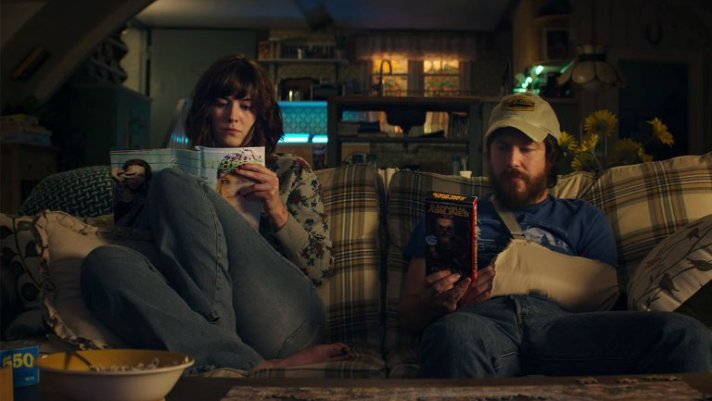10 Cloverfield Lane signals what the audience can expect early on. Michelle (Mary Elizabeth Winstead) has left the apartment she apparently shares with her finance after they’ve had a fight and is driving away, all of her important possessions in the car with her. While driving down the highway after dark she’s sideswiped by a pickup truck and is rolling over and over into the field on the side of the road. In the middle of this high tension moment, filled with the noise of metal bending and scraping and her own screams the screen goes dark and we see the title treatment. So the audience is pulled out of what they’re experiencing unexpectedly and suddenly, setting up the experience that will follow with them the entire rest of the film.

The movie’s theatrical marketing campaign didn’t spoil or tip its hand to that moment in particular, but it is illustrative of how the movie plays out. Michelle is taken in by Howard (John Goodman) because, he says, there was some sort of attack and he found her after the accident, saving her life by bringing her to his survival bunker along with Emmet, a young guy from the area who helped build and stock it. Michelle, though, doesn’t quite believe the story and questions at most every turn Howard’s – and sometimes Emmet’s – version of events, convinced in some part of her mind that Howard has simply kidnapped her and has malicious intent at heart.
That’s what the campaign setup: A push and pull between everyone’s version of what has happened and their ability to conform to the new situation. For every bit of evidence Michelle uncovers that says Howard is telling the truth there’s another that says there’s more to the story and Howard is a villain.
It’s not that simple though and, without spoiling any big reveals, there’s shades of truth in everyone’s version of reality. That’s a much more complex, interesting and ambiguous story than was told in 2008’s Cloverfield, which shares little connective material with this new movie.
More than that, as I said at the beginning, it keeps the audience on edge and paying attention to what’s going on. Every time some new fact or theory is advanced the viewer is upended. The story never lets us find solid ground and sit back to enjoy seeing how things play out. Instead we’re constantly having the rug pulled out from under us as we find that no, Howard is telling the truth. But not about this. But Michelle is right to question him, just not about that. It zigs and zags like few other movies do and in a way that may not have been possible without the support of someone as dedicated to mysteries as J.J. Abrams, who served as a producer here.
There are moments in the movie that were clearly misrepresented in the marketing campaign; you find that experiences and story flow are almost 180 degrees from how the trailers and TV spots presented them. That all seems to have been done, though, in the name of not only not spoiling the big reveals and multiple twists that are taken but also the actual flow of the story, which takes the viewer on a very interesting and unexpected journey.
It’s easy to see why 10 Cloverfield Lane made so many critics’ lists of the best movies of the year at the mid-way point. It’s also easy to see why it turned off so many audiences: This doesn’t follow the Marvel formula we’ve been conditioned to expect. But it is a rewarding experience, with an ending that makes you reassess whether the characters made the wrong or right decisions for themselves and those around them.
